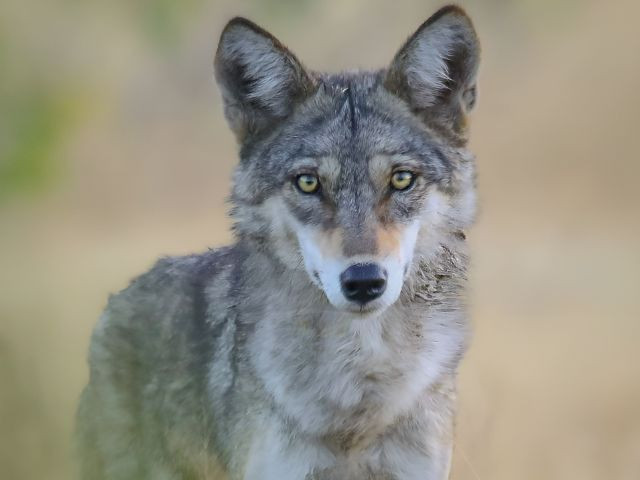Only 269 to 290 adult Indian wolves remain in Pakistan, including 42 breeding pairs
An image of Indian wolf. PHOTO: WIKIMEDIA COMMONS
The Indian wolf, a rare South Asian subspecies, has been officially classified as endangered in the latest IUCN Red List of Threatened Species amid rapid population decline, habitat loss, and human pressures.
Genetic research indicates only 269 to 290 adult Indian wolves remain in Pakistan, including 42 breeding pairs. Most inhabit unprotected landscapes across Cholistan, the Salt Range, and Sindh’s Tharparkar region.
“The wolf’s greatest threat is not the gun—but the bulldozer,” said wildlife biologist Umer Khayyam. “Agricultural expansion, infrastructure, and depletion of natural prey are driving this decline, while diseases from feral dogs and illegal killings further threaten survival.”
Read: Experts warn of extinction of wolves in Pakistan without urgent conservation
The Salt Range has recently provided confirmed sightings. Punjab’s Wildlife Department captured the first government-documented photograph of an Indian wolf near Kalabagh, marking a milestone in conservation.
“For the first time, we now have digital evidence proving the presence of the Indian wolf in Punjab,” said Mudassar Riaz Malik, Secretary for Forests and Wildlife. A video recorded along the M-2 Motorway in April 2025 was later verified by authorities.
The Indian wolf’s population is declining at 3% annually, potentially falling 30–40% over the next 15 years if current trends continue. Experts stress that protection of grasslands, community-based herding, and cross-border cooperation with India are essential.
Read More: Rare Indian grey wolf killed by shepherds in Bahawalpur
Dr. Hira Fatima of the University of Education, Attock, said, “Without formal conservation frameworks, the species’ survival in Pakistan is at serious risk.” The nationwide survey launched in September 2024, covering Punjab, Sindh, and Balochistan, aims to provide a reliable population estimate, currently believed to be between 200 and 300 individuals.
The IUCN describes the Indian wolf as a “living relic of South Asia’s evolutionary heritage,” with a lineage dating back 110,000 years.
Conservationists urge Pakistan to incorporate the species into national wildlife policy to safeguard habitats in Cholistan, Potohar, and Thar, offering the last chance to maintain ecological balance.

